A historic Calima unexpectedly extended my stay on El Hierro. A Calima is a meteorological phenomenon that describes a strong and hot wind blowing dust from the Sahara over the Canary Islands. The sea was really rough, so I decided to stay a little longer instead of getting sea sick on the ferry to La Gomera.
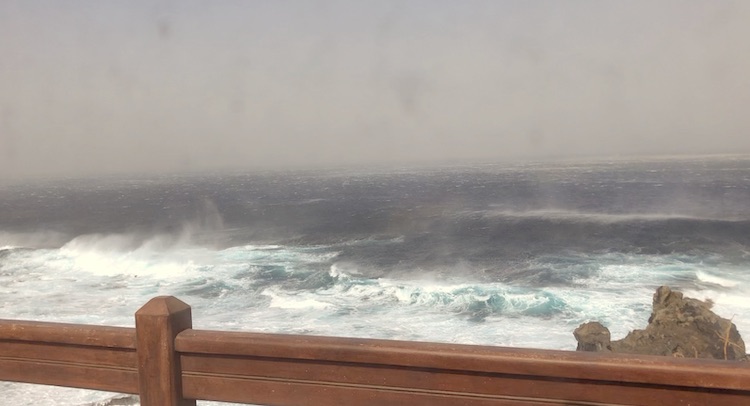
The air was still very dusty after the storm calmed down. It was even possible to look into the sun without sunglasses.
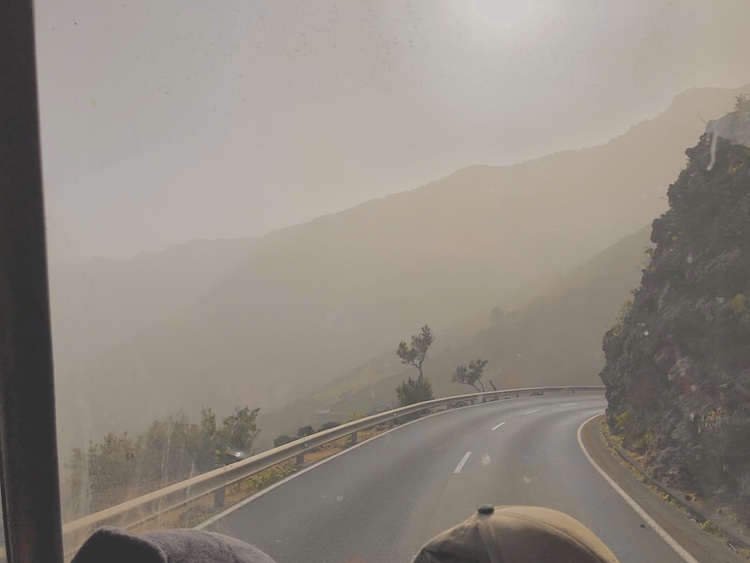
Questioning La Gomera
When the weather finally improved, I took the ferry to La Gomera. I spent my first night on the third smallest of the Canary Islands at Playa de Ávalo.
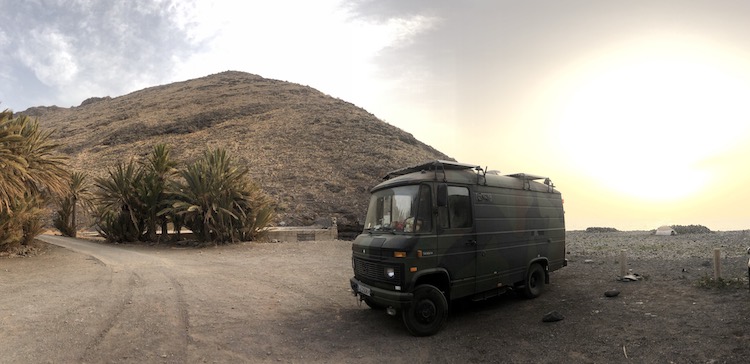
Unfortunately, the network connection was really unreliable in the canyon, so I had to drive back to San Sebastián de La Gomera. I quickly left the town after work to look for a better spot in the mountains. While the network connection was brilliant more than 1000 meters above sea level, the view was very disappointing.

The island was still covered in dust from the Calima. The mountains didn’t seem like an attractive place to stay, so I drove down to Playa de Tapachuga hoping for a nice spot at the beach.

The spot look promising. I also spotted a few interesting vans in front of the beach. Unfortunately, I had the same problem when driving down the canyon: no network signal. ![]() I had to switch the canyon to work from the beach front near Laguna de Santiago.
I had to switch the canyon to work from the beach front near Laguna de Santiago.
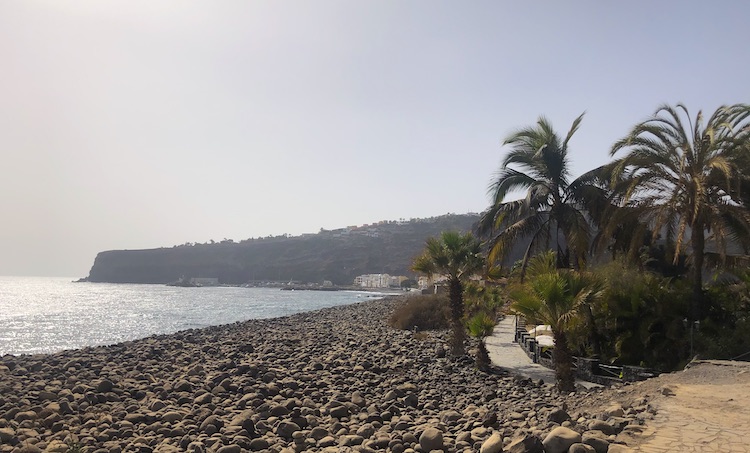
I didn’t really like the vibe in Laguna de Santiago and Playa de Santiago. I started to miss El Hierro where I was excited about every spot I visited. Maybe La Gomera wasn’t the right place for me?
Changing my opinion
My initial concerns suddenly disappeared when I drove from Laguna de Santiago toward Valle Gran Rey. The air seemed way cleaner when I drove up the canyon.

My route lead me on road GM-2 through Parque Nacional de Garajonay which looked amazing. All the dust was finally gone and I could even see Pico del Teide on Tenerife.
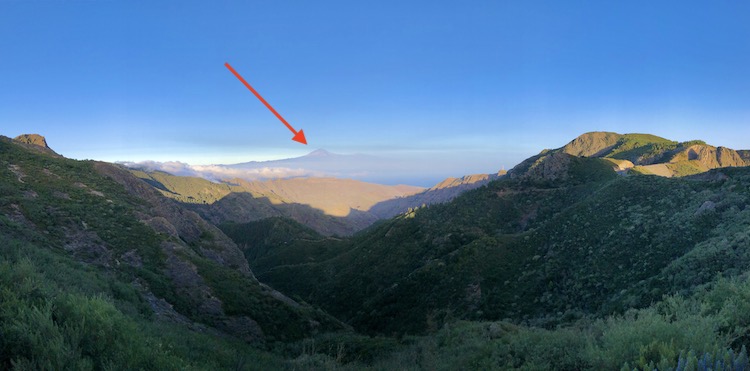
A few kilometers in front of Valley Gran Rey, I was also able to spot Roque de los Muchachos on La Palma.

Awesome, I was excited again!
Working amongst Hippies
Valley Gran Rey seemed like a hotspot for Hippies, especially for Germans. The spectrum reached from bearded low-budget hobos living in caves or tents, to hotel guests wearing hippie costumes and listing to music through their Bose headphones while lying naked on the beach. It was hard to distinguish between the “real” hippies and the tourists that wanted to enjoy the hippie lifestyle during their vacation. Although a lot of different characters were mixed in this little beach town, they all seemed to get along with each other: Some hippies built jewelry, played music or performed shows and other “hippies” financially supported them by buying their products or donating some money.

I didn’t feel like staying in the center of the town and stayed a little secludedly next to a soccer field in front of Playa del Inglés. I liked the spot. After hopping from one place to the other, I had finally found a place where I could stay for a couple of days to work in a relaxed environment.
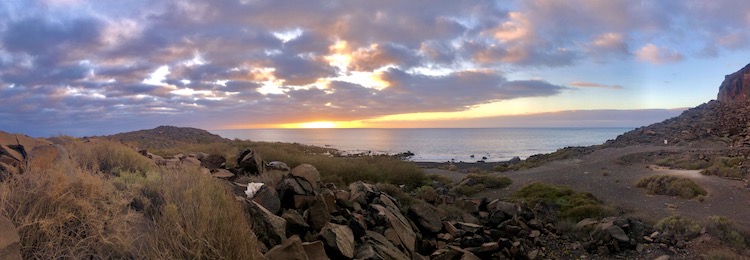
Exploring the north and east
I wanted to use the weekend to explore the beautiful nature that I saw on my way to Valley Gran Rey. I had enough of all the hippies, so I left Valley Gran Rey headed to the northern and eastern part of the island. Places like Tamargada seemed much more pristine and less touristic.

I found a natural pool near Santa Catalina which was amazing.

I really dig these freely accessible pools that you can find all around the Canary Islands.
Hiking through paradise on Routa 18
My day ended in the forest near El Cedro.

While strolling around the parking lot, I found an interesting sign describing Routa 18, la Gomera’s longest hiking trail through Parque Nacional de Garajonay.

A 16km round trip through different kinds of ecosystems sounded awesome! I started the hike the very next morning.
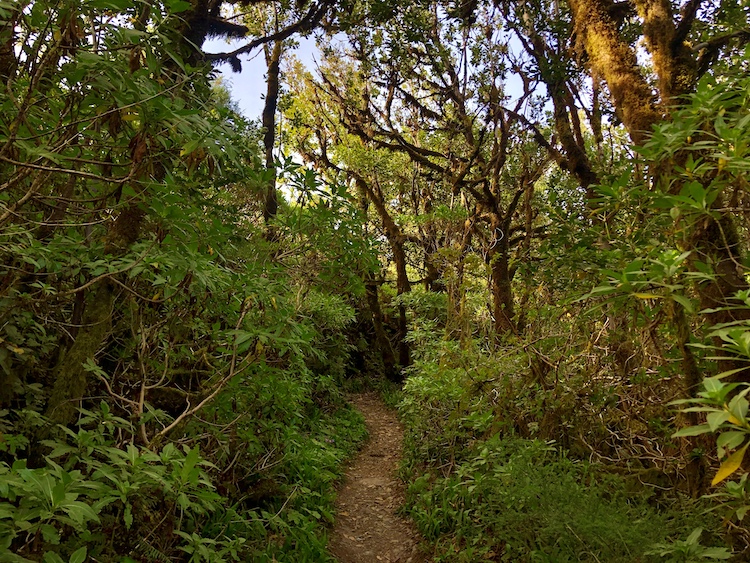
The path lead through the dense forest. The air smelled really fresh and most trees were covered by moss.

After hiking for a couple of hours through the forest without seeing anything but trees, I reached a little clearing that offered a stunning view.
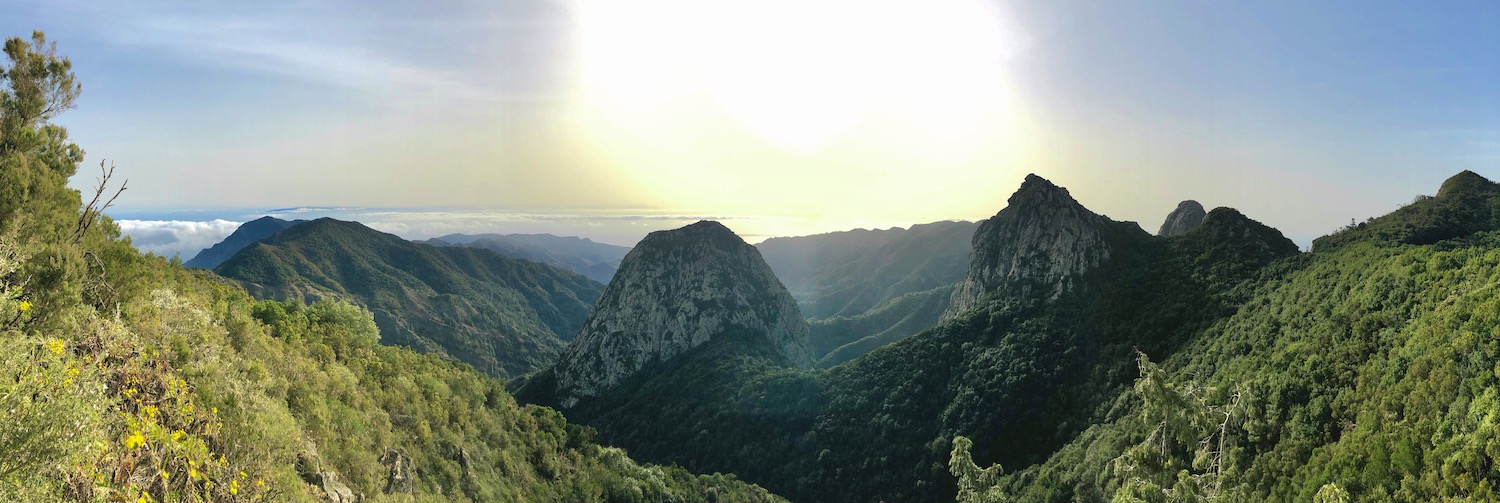
While ascending toward the highest point of the island, the greenery started changing. Instead of trees, flowers were growing next to the trail.
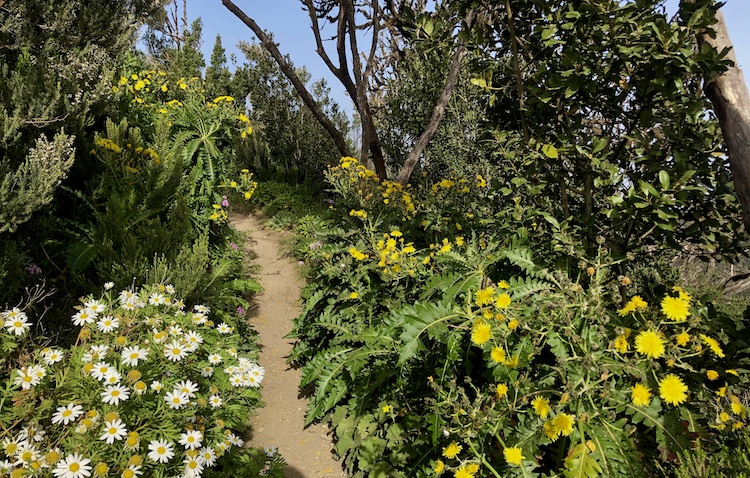
Bees were busily flying from one flower to the other. ![]()
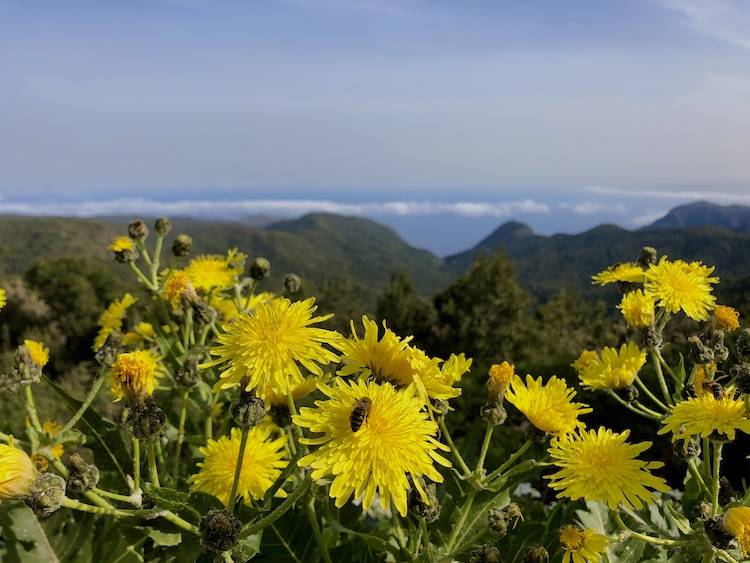
I also spotted a lot of lizards, like this little guy:
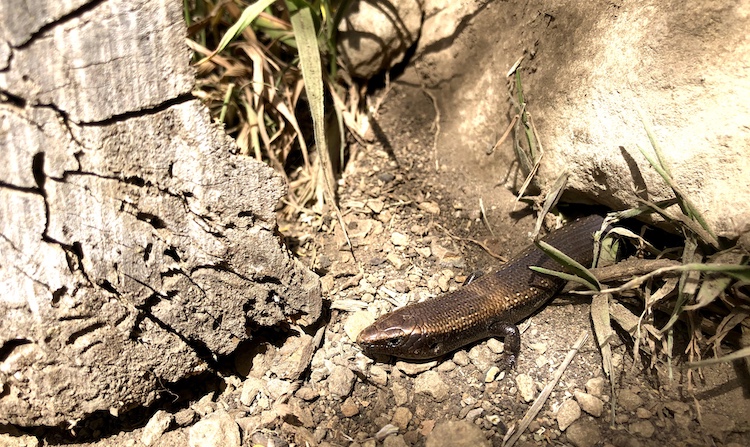
After about three hours I reached Alto de Garajonay, the highest peak of La Gomera.
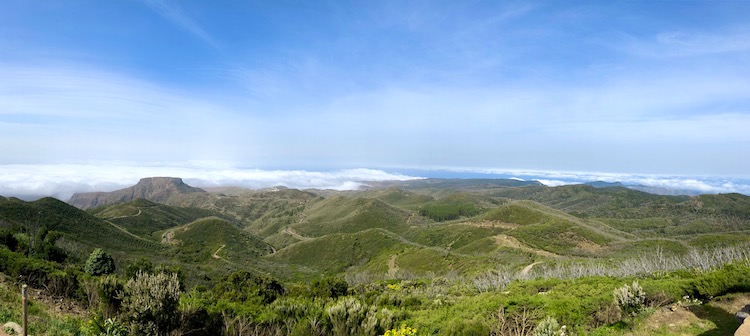
On my way down, I spotted a little creek. It was the first time that I saw a natural stream on the Canary Islands.

I ended my trip cheerfully in El Cedro where I had parked my van.

What an awesome hiking trip! The sign said that the round trip would take about nine hours. I already returned after six hours, so there was enough time left to drive back to Playa de Ávalo for a refreshing bath in the sea.
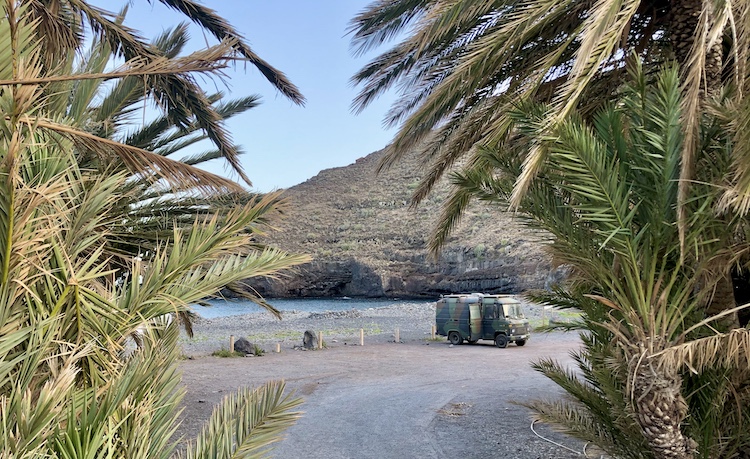
I spent my last night at the same place where I spent my first night. However, my feelings were totally different. I was really happy that I didn’t prejudge the island. La Gomera was awesome!